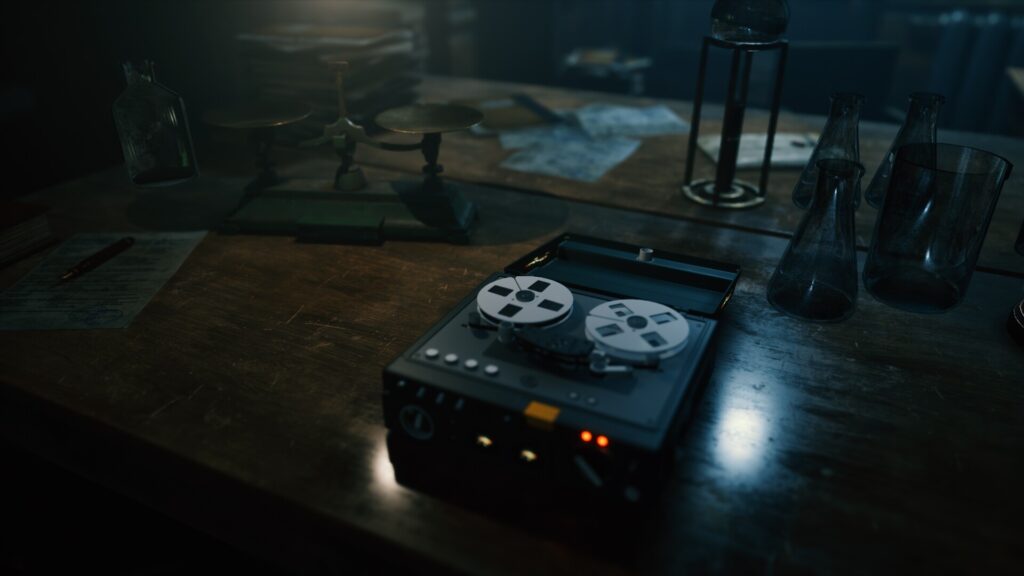Ever wanted to step into a detective novel? One of those smoky, dimly lit noir tales where the glow of a battered streetlamp feels like it’s judging you, and every creaking floorboard might be a clue? Well, dust off your trench coat, straighten your fedora, and ignore the lingering smell of stale cigarettes, because The Last Case of John Morley throws you right back into that gritty atmosphere. This isn’t just a game about solving a mystery; it’s a game about walking directly into the past and hoping the ghosts you wake up don’t bite back. It felt like I walked in the holodeck from the Star Trek universe, but this is not a Star Trek game, so let’s dive in!
Story
You play as John Morley, a seasoned detective with more emotional scars than he’s willing to admit. After months in the hospital recovering from an incident that left both his body and his reputation bruised, he returns to his office only to find a new case waiting for him, or rather, an old one? Lady Margaret Fordside, dignified yet visibly burdened by grief, arrives with a plea: twenty years ago, her daughter was murdered. The crime was supposedly solved, the perpetrators supposedly caught, and the case supposedly closed. But Margaret has never believed the official story. Something about it never sat right, and now she wants Morley to uncover the truth that slipped through the cracks.
What seems like a faded, dusty file quickly becomes a web of hidden motives, misplaced memories, decaying estates, and testimonies warped by time. You’ll explore abandoned mansions, forgotten institutions, and empty streets that all seem to whisper parts of a truth no one wanted uncovered. And as Morley digs deeper, it becomes clear that the truth didn’t stay buried because it was harmless, but because it was dangerous.
Gameplay & mechanics
At its core, The Last Case of John Morley is a classic first-person detective experience, built around careful observation, slow-burning discovery, and methodical reconstruction of fragmented narratives. There are no car chases, fistfights, or frantic shootouts here, and honestly, that’s a strength. The game wants you to think, not to rush. You’ll spend much of your time scouring rooms for clues, inspecting objects, piecing together evidence, and solving puzzles that tie the whole investigation together. The mechanics are straightforward enough to be welcoming but still demand just enough attention that you feel genuinely involved in solving the case. You don’t just click through dialogue; you’re actively putting the narrative back together.
The pacing is intentionally deliberate. This isn’t a thriller that sprints from moment to moment; it’s a mood piece. You take your time. You examine every photograph, every letter, every scrap of memory left behind in these dusty settings. The puzzles are logical and rarely frustrating, and there’s satisfaction in how everything eventually clicks into place. For players who enjoy a cerebral experience, the game hits precisely the right notes. For those who need more adrenaline, it may at times feel slow, but that still feels like a deliberate design choice rather than a flaw. Especially when you reach the ending of the story, it will feel so rewarding to have pieced everything together as the developers wanted you to.
Art, atmosphere & sound
The strongest pillar of The Last Case of John Morley is unquestionably its atmosphere. The game captures a vintage noir aesthetic with remarkable confidence: dim hallways lined with dusty portraits, flickering lamps casting long, trembling shadows, and rooms that look frozen in time. As John states: “It’s as if the people who once lived there left in a hurry, abandoning their secrets but leaving behind their regrets.” And it works. Every environment feels hand-crafted to make you feel the melancholy and tension. The world isn’t huge, but it’s dense, and that density makes each location feel meaningful, contributing piece by piece to the case’s emotional weight. And who doesn’t like to scurry through an abandoned psych ward, without being chased by abominations for once? Yes, I’m looking at you, Outlast.
The sound design completes the illusion. Soft, moody jazz drifts through the quiet, broken only by the distant groan of old pipes or the whisper of wind through cracked windowpanes. These subtle audio cues ground the world in a way that’s rare for indie detective games. It feels cinematic, like you’ve stepped into a black-and-white film that’s been carefully colorized just for you, which sums up why I made that tiny nod to Star Trek at the beginning of my review. This dedication to setting a tone elevates the entire experience. Even when nothing is happening mechanically, the atmosphere keeps you invested, nudging you forward with a sense of creeping anticipation. Following the breadcrumbs is rewarding and feels good, even when you are a bit lost due to some quality-of-life bug that needs to be patched.
Bugs
I did encounter some bugs, nothing game-breaking, but frustrating at least. I once got stuck in a door, which forced me to reload and redo a part of the game. Another thing that often happened when playing on my Ally with just the sticks on the consoles themselves was random camera movements, which offered some interesting camera angles. Again, nothing game-breaking, just things I hope get patched out before it hits the store near you.
Conclusion
The Last Case of John Morley isn’t trying to be a blockbuster. It’s a focused, atmospheric detective tale that trades speed for mood and spectacle for tension. Clocking in at around three hours, it’s a short but well-crafted investigation that manages to stay engaging from start to finish, and is helped enormously by its thick, melancholic noir atmosphere and its commitment to letting players actually investigate rather than watch events unfold. It’s not perfect, and depending on the version you played, technical hiccups or pacing issues may momentarily pull you out of the experience. Still, as a dedicated dive into classic detective storytelling, it succeeds with confidence.




